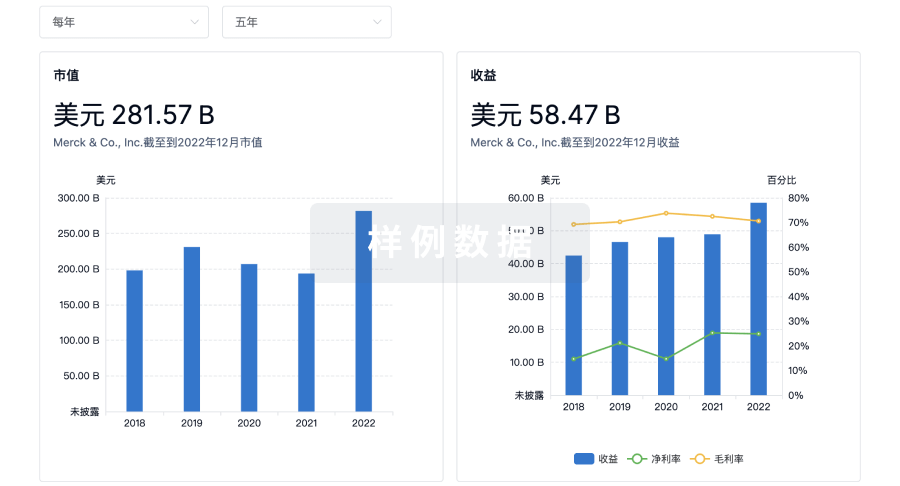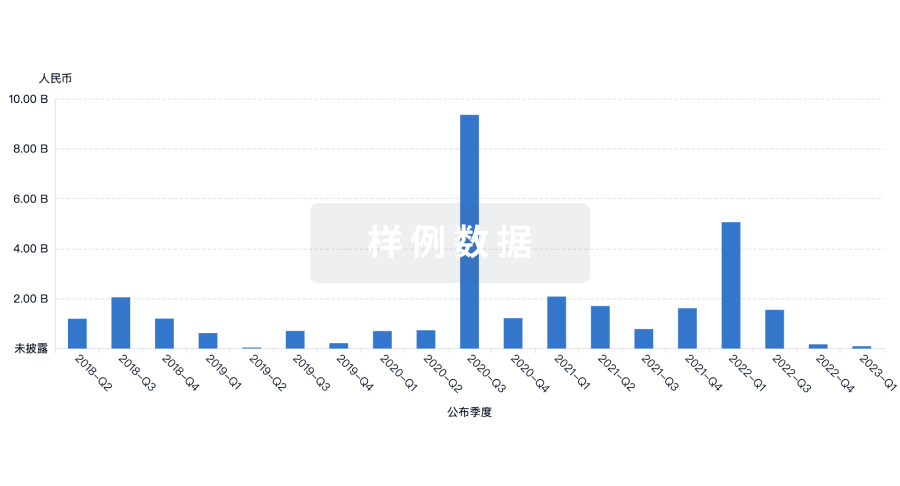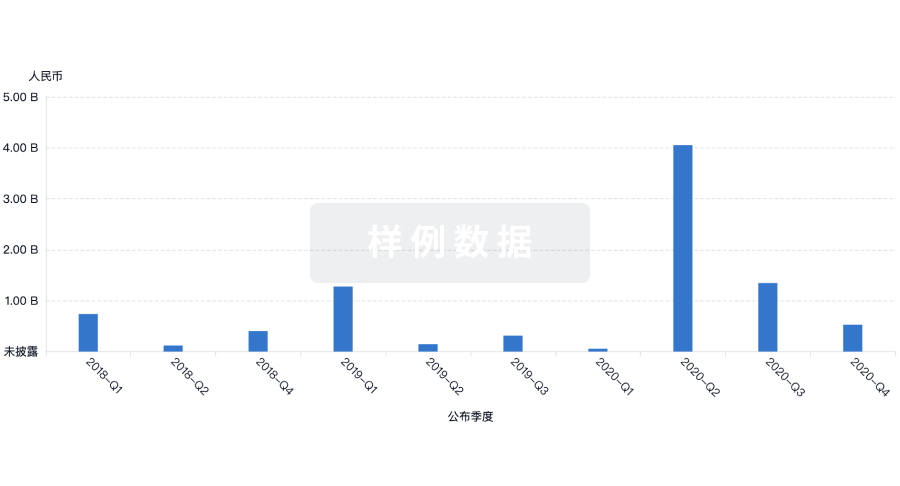预约演示
更新于:2025-09-09

Akita University
更新于:2025-09-09
概览
标签
肿瘤
小分子化药
关联
1
项与 Akita University 相关的药物US20240158430
专利挖掘靶点- |
作用机制- |
原研机构 |
在研适应症 |
非在研适应症- |
最高研发阶段药物发现 |
首次获批国家/地区- |
首次获批日期- |
43
项与 Akita University 相关的临床试验JPRN-UMIN000053487
Evaluating the Efficacy of First-Person Perspective Simulation Video for Non-Technical Skill Training in Airway Management during Clinical Clerkship. - Evaluating the Efficacy of First-Person Perspective Simulation Video for Non-Technical Skill Training in Airway Management during Clinical Clerkship.
开始日期2024-01-31 |
申办/合作机构 |
JPRN-UMIN000053148
Verification of the Effectiveness of Digital Transformation (Dx) in Nursing Homes to Improve the Nursing Care Environment - Verification of the Effectiveness of Digital Transformation (Dx) in Nursing Homes
开始日期2024-01-15 |
申办/合作机构 |
JPRN-UMIN000053128
Intraoperative renal desaturation and postoperative acute kidney injury in patients undergoing robot-assisted laparoscopic radical prostatectomy - Intraoperative renal desaturation and postoperative acute kidney injury in patients undergoing robot-assisted laparoscopic radical prostatectomy
开始日期2024-01-01 |
申办/合作机构 |
100 项与 Akita University 相关的临床结果
登录后查看更多信息
0 项与 Akita University 相关的专利(医药)
登录后查看更多信息
8,720
项与 Akita University 相关的文献(医药)2025-12-01·Natural Products and Bioprospecting
Correction: New acetogenin katsuurallene from Laurencia saitoi collected from Katsuura, Japan
作者: Suzuki, Minoru ; Mihara, Yoshihiro ; Matsuura, Hiroshi ; Ishii, Takahiro ; Sato, Kosuke ; Togashi, Iwao ; Kamada, Takashi ; Shinjo, Yuto ; Abe, Tsuyoshi ; Miyagi, Miyu ; Kikuchi, Norio ; Sugimoto, Keisuke ; Minamida, Yu
2025-09-01·Legal Medicine
Unexpected death from air embolism during routine dental Procedure: A case report
Article
作者: Iwahara, Kaori ; Yokoo, Satoshi ; Hayakawa, Akira ; Fukushima, Kazunori ; Takahashi, Yoichiro ; Tokue, Hiroyuki ; Fukuda, Haruki ; Tsuzuki, Tamiyuki ; Obana, Yuta ; Sano, Rie
Air embolism during dental treatment is a rare but severe complication. We report a woman in her 70 s who died of an air embolism. The patient experienced sudden stiffness and loss of consciousness while undergoing restorative treatment for cervical caries of the lower right second molar. Despite resuscitation efforts, the patient died 2 h later. Postmortem computed tomography revealed subcutaneous emphysema from the right mandible to the cervical area; gas within the right mandibular canal; and expansion of the right submental vein extending to the right anterior jugular vein, brain, cervical vessels, and heart chambers. An autopsy revealed mucosal abrasions and bleeding around the gingival mucosa, gas in the cerebral and cervical vessels, and an open oval foramen in the atrial septum. Histopathological examination revealed emphysematous and exudative changes in the granulation tissue and empty veins, indicating the presence of air surrounding the lower right second molar. In this case, routine dental treatment resulted in a fatal outcome, which was attributed to the following. First, the patient had fragile periodontal tissue, which made it prone to air infiltration. Second, the patent foramen ovale allowed air to pass from the venous to the arterial system, leading to systemic and cerebral air embolisms.
2025-09-01·JOURNAL OF CLINICAL PATHOLOGY
CD31 expression in human cancers: a pan-cancer immunohistochemical study
Article
作者: Horie, Masafumi ; Ito, Ayumi ; Ito, Yukinobu ; Goto, Akiteru ; Omori, Yasufumi ; Maeda, Daichi ; Ikeda, Hiroko
Aims:
CD31 (platelet endothelial cell adhesion molecule 1) is a transmembrane glycoprotein involved in cell adhesion and signal transduction that is primarily expressed in vascular endothelial cells, platelets, neutrophils, and certain tumour cells. We investigated CD31 expression in cancer cells by conducting a pan-cancer gene expression analysis using data from cancer cell lines as well as an immunohistochemical analysis of surgically resected cancer specimens. The goal was to elucidate the frequency and distribution of CD31 expression across cancer types and its diagnostic significance.
Methods:
Gene expression data from 1073 cancer cell lines were analysed to determine the frequency of CD31 expression across different cancer types. Immunohistochemical analysis was performed on 358 resected cancer specimens, focusing on adenocarcinomas and squamous cell carcinomas. The analysis compared the frequency of CD31 expression among specific cancer subtypes and between histological types.
Results:
In gene expression analyses, adenocarcinomas showed a higher frequency of CD31 expression than did squamous cell carcinomas. Immunohistochemically, CD31 expression was observed in breast apocrine carcinomas (40.0%), hepatocellular carcinomas (18.8%), uterine endometrioid adenocarcinomas (31.6%), ovarian high-grade serous carcinomas (20.0%), ovarian clear cell carcinomas (40.0%) and urothelial carcinomas (25.0%). No CD31 expression was detected in oesophageal, renal, prostate or cervical cancers.
Conclusions:
CD31 expression is more frequent in adenocarcinomas than in squamous cell carcinomas, with variability among cancer subtypes. Recognising CD31-positive cancers is critical to avoid misdiagnosing them as endothelial-derived tumours. The mechanisms underlying CD31 expression in cancer remain unclear and warrant further investigation.
4
项与 Akita University 相关的新闻(医药)2024-10-01
OSAKA, Japan, October 1, 2024 - Shionogi & Co., Ltd. (Head Office: Osaka, Japan; Chief Executive Officer: Isao Teshirogi, Ph.D.; hereafter "Shionogi") announced that effective April 1, 2025, Shionogi Pharma Co., Ltd. (Head Office: Osaka, Japan; President and Chief Executive Officer: Akira Kato; hereafter "Shionogi Pharma"), a wholly-owned subsidiary of Shionogi, will succeed the vaccine production function of UMN Pharma Inc. (Head Office: Akita, Japan; Representative Director and Chief Executive Officer: Kazufumi Katayama; hereafter "UMN Pharma"), a wholly-owned subsidiary of Shionogi, through an absorption-type company split (hereafter "this absorption-type company split"), and UMN Pharma will be liquidated.
1. Purpose of this absorption-type company split
In our medium-term management plan, STS2030 Revision, we have set forth enhancement of our vaccine business as part of total care for infectious diseases*1. This fiscal year, we established the Vaccine Business Division to oversee research and development, production, and sales in an integrated manner, thereby creating a system that can respond quickly and flexibly from vaccine production to supply. To strengthen and streamline our vaccine production capabilities, Shionogi Pharma has decided to succeed the vaccine production function of UMN Pharma through this absorption-type company split.
Through this absorption-type company Split, we will integrate UMN Pharma's production, research, and other related functions into Shionogi Pharma. The Akita Plant will be transferred as a new vaccine production base for Shionogi Pharma, while the Akita laboratory, Yokohama laboratory, and Tokyo Head office will be closed. This will allow us to unify our vaccine production system, from initial formulation to clinical trial drug manufacturing and scaling up to commercial production, thereby strengthening the collaboration between our vaccine functions. By combining UMN Pharma's BEVS*2-based recombinant protein vaccine technology platform with Shionogi Pharma's independently developed manufacturing technologies, long-standing manufacturing expertise, and cultivated human resources, we will accelerate our efforts in our vaccine business.
*1 Not only researching and developing therapeutic drugs, but also building awareness, epidemiologic monitoring, prevention, diagnosis, addressing exacerbations, and prevention
*2 BEVS: Baculovirus Expression Vector System
2. Outline of this absorption-type company split
Succeeding company in absorption-type company split Absorption-type Company 1. Company Name Shionogi Pharma Co., Ltd. UMN Pharma Inc. 2. Major Business Areas Manufacturing, sale, analytical testing and pharmaceutical engineering of medicinal drugs and investigational drugs Research, Development, Manufacturing, and Sales of Biopharmaceuticals 3. Date Established October 1, 2018 April 20, 2004 4. Address 2-5-1, Mishima, Settsu, Osaka 4-2-3, Gosyonoyumoto, Akita 5. Representative President and CEO Akira Kato Representative Director and CEO Kazufumi Katayama 6. Capital 90 million yen 90 million yen 7. End of Fiscal Year March 31 March 31 8. Principal shareholders and investment ratio Shionogi & Co., Ltd. 100.0% Shionogi & Co., Ltd. 100.0%
3. Status after this absorption-type company split (Scheduled for April 1, 2025)
There will be no changes to the names, locations, business activities, or capital of the companies involved in this absorption-type company split. Through this absorption-type company split, the production functions of UMN Pharma will be succeeded to Shionogi Pharma, while certain assets such as goodwill and intangible assets will be transferred to Shionogi. UMN Pharma is scheduled to be dissolved at an extraordinary general meeting of shareholders on March 31, 2025, and the liquidation is expected to be completed by early June of the same year.
4. Prospects
Since this absorption-type company split involves wholly-owned subsidiaries of Shionogi, its impact on our consolidated financial results is expected to be minimal.
For Further Information, Contact:
SHIONOGI Website Inquiry Form : https://www.shionogi.com/global/en/contact.html
疫苗并购
2024-09-25
BOSTON and COLUMBUS, Ohio, Sept. 25, 2024 /PRNewswire/ -- Akita Biosciences, Inc., a biotech company that develops innovative nasal spray formulations for drug, device, and cosmetic applications, announces the publication of its platform nasal technology in the prestigious scientific journal Advanced Materials. Akita Biosciences is currently marketing Profi Nasal Spray as a cosmetic product for nasal hygiene, and this study reports extensive pre-clinical studies with potential drug and medical device applications.
Continue Reading
Pathogens in respiratory droplets often adhere to the nasal lining, leading to infections. Akita Biosciences' Pathogen Capture and Neutralization Spray (PCANS) technology is designed to coat the nasal passages with a gel-like barrier lasting several hours. In pre-clinical studies, it has been shown to capture large respiratory droplets, block a broad spectrum of viruses and bacteria, and neutralize them effectively. Courtesy of Randal McKenzie, McKenzie Illustrations.
The peer-reviewed study, 'Toward a Radically Simple Multi-Modal Nasal Spray for Preventing Respiratory Infections,' highlights Akita Biosciences' innovative approach to respiratory protection. The company's Pathogen Capture and Neutralization Spray (PCANS) technology demonstrates broad-spectrum activity against common pathogens, including viruses such as influenza, SARS-CoV-2, RSV, adenovirus, and the bacterium Klebsiella pneumoniae, all of which can spread through airborne transmission and pose significant health risks. Developed by researchers at Brigham and Women's Hospital, this innovative technology is designed to form a gel-like barrier in the nasal passages to capture, block, and neutralize these pathogens for several hours.
"We know that influenza, COVID-19, and other seasonal infections cause thousands of deaths and make hundreds of thousands seriously ill every year. In our research, we looked at how a nasal spray we developed might protect against these respiratory viruses," said Dr. Jeff Karp, co-founder of Akita Biosciences, Distinguished Chair and Professor at Brigham and Women's Hospital, and co-senior author of this work. "Our pre-clinical findings indicate that this nasal spray can create a robust barrier that effectively captures airborne viruses and bacteria, preventing their transport across the nasal lining, and rapidly neutralizing them."
Vulnerable populations—including children, the elderly, immunocompromised individuals, and those with chronic respiratory conditions—are at heightened risk of severe infections and complications. The World Health Organization recently updated its definitions to highlight that many respiratory infections primarily spread through airborne transmission, making them difficult to avoid. Environments such as schools, airplanes, nursing homes, and other crowded spaces present significant challenges for breaking the chain of transmission due to shared air, close contact, and prolonged exposure. PCANS is designed to combat these issues by shielding the nasal passages, the primary entry point for many airborne pathogens.
"The nasal spray was developed using ingredients from the FDA's Inactive Ingredient Database (IID), which have been previously used in approved nasal sprays or long used in consumer products," said Dr. Nitin Joshi, co-founder of Akita Biosciences, Assistant Professor at Brigham and Women's Hospital, and co-senior author of the paper. "The formulation has been engineered to offer broad-spectrum protection and stay in the nasal passages for over eight hours, setting a new standard for how long nasal sprays last."
"We're honored that our technology has been recognized by such a prestigious journal," said Alex Revelos, CEO and co-founder of Akita Biosciences. "Our mission is to deliver nasal therapies that protect against airborne threats and empower people to take control of their health."
About Akita Biosciences, Inc.
Akita Biosciences is at the forefront of health and wellness with innovative nasal sprays that leverage world-class science and advanced formulations to enhance human health. While traditional supplements focus on general wellness, our approach targets the nasal passages—where airborne germs, allergens, and irritants first enter the body. By delivering proactive, targeted solutions at this crucial point of entry, we support respiratory health and contribute to overall well-being. At Akita, we're not just addressing health challenges; we're setting a new standard for how people support their health in an increasingly airborne world. Discover how we are shaping the future at and .
Media Contact:
Michael Simonson
(201) 572-1030
[email protected]
SOURCE Akita Biosciences
WANT YOUR COMPANY'S NEWS FEATURED ON PRNEWSWIRE.COM?
440k+
Newsrooms &
Influencers
9k+
Digital Media
Outlets
270k+
Journalists
Opted In
GET STARTED
2023-10-10
First product, Profi™, is a new once-daily nasal spray based on novel science from Boston's Brigham and Women's Hospital and used proactively to support respiratory wellness
BOSTON and COLUMBUS, Ohio, Oct. 10, 2023 /PRNewswire/ -- Akita Biosciences, a biotechnology company focused on consumer health, is launching today with a mission to bring novel therapies to market. The company is developing pioneering science around the importance of the nasal cavity, both as a pathway for therapeutics and as a way to defend against illness. Akita Biosciences was founded based on research conducted at Brigham and Women's Hospital in Boston.
Continue Reading
Profi helps block and remove airborne contaminants for up to 8 hours.
Everyday nasal spray is great for travel, groups, and work.
"The nasal passage is the primary entry point for many respiratory pathogens, and research suggests it may be an overlooked avenue for defending against infections," said Dr. Jeff Karp, a co-founder of Akita Biosciences and also a Professor at Brigham and Women's Hospital, Harvard Medical School.
The company's first product, Profi™, which is available to consumers today, is a revolutionary drug-free nasal spray that supports a healthy immune system, especially during periods with spikes in respiratory illnesses. Profi helps block and remove inhaled airborne contaminants for up to eight hours with one spray. As a new hygiene tool, Profi is as important as washing your hands to stay healthy this cold and flu season.
"Our studies identified a formulation of intranasal-safe ingredients that have excellent physical barrier properties against different respiratory pathogens," said Dr. Nitin Joshi, Assistant Professor at Brigham and Women's Hospital and Harvard Medical School and a lead researcher for the project. "The formulation rapidly neutralized a broad spectrum of viruses and bacteria, including Influenza A and B, SARS-CoV-2, RSV, adenovirus, E. coli, and K. pneumoniae; reducing the pathogen load by more than 99.99%."
Based on this research, "Akita Biosciences developed a radically simple approach that works with the natural defenses in the nose," said Alex Revelos, CEO.
Profi is a drug-free formulation composed predominantly of ingredients that have previously been used intranasally at doses higher than in this product and which are on the FDA's Inactive Ingredient Database (IID) and Generally Recognized As Safe (GRAS) lists. The spray forms a coating in the nasal cavity, which then helps traps and removes the contaminants, preventing them from moving further down the respiratory tract, while also helping maintain a hydrated environment. As a result, the natural immune function of the nose is supported.
"The pandemic made us all keenly aware that the air we breathe is full of contaminants," said Mr. Revelos. "For most of us though, it's impossible to always wear a mask and avoid social interactions. Risk is part of daily life–whether because we work in hospitals, attend conferences, teach school, or serve the hospitality industry. I'm thrilled to offer an easy-to-use option to support health and bring peace of mind this season."
The development of Profi was rooted in rigorous research and collaboration by co-founders Nitin Joshi, Ph.D, Assistant Professor at Harvard Medical School and an Associate Bioengineer at the Brigham and Women's Hospital, and Jeff Karp, Ph.D, Professor at Harvard Medical School and Distinguished Chair in Anesthesiology at Brigham and Women's Hospital, who tested more than 100 distinct formulations to pinpoint the optimal combination that forms a safe and effective shield over the nasal lining for blocking and neutralizing a broad spectrum of pathogens. Building on the commercial launch of Profi, Akita Biosciences expects to continue developing biomaterials to support a wide range wellness, drug delivery, and therapeutic applications.
Profi is available for purchase today online. To learn more, visit: .
About Akita Biosciences
Akita Biosciences is a biotechnology company pioneering novel intranasal therapies for consumer health. Co-founded by Harvard Medical School faculty members Nitin Joshi, Ph.D and Jeff Karp, Ph.D along with entrepreneur Christopher Lee, Ph.D. and led by CEO Alex Revelos, Akita's lead product is a once-daily nasal spray that is taken proactively to cleanse the nose from airborne contaminants. The company is continuing to develop new applications for their proprietary intranasal platform in the service of helping people live healthy and vibrant lives. Learn more at .
Media Contact
Jacqui Miller
[email protected]
(617) 468-8243
SOURCE Akita Biosciences
100 项与 Akita University 相关的药物交易
登录后查看更多信息
100 项与 Akita University 相关的转化医学
登录后查看更多信息
组织架构
使用我们的机构树数据加速您的研究。
登录
或

管线布局
2025年10月29日管线快照
管线布局中药物为当前组织机构及其子机构作为药物机构进行统计,早期临床1期并入临床1期,临床1/2期并入临床2期,临床2/3期并入临床3期
药物发现
1
1
其他
登录后查看更多信息
当前项目
| 药物(靶点) | 适应症 | 全球最高研发状态 |
|---|---|---|
US20240158430 专利挖掘 | 肿瘤 更多 | 药物发现 |
B38-CAP ( Ang II ) | 高血压 更多 | 无进展 |
登录后查看更多信息
药物交易
使用我们的药物交易数据加速您的研究。
登录
或

转化医学
使用我们的转化医学数据加速您的研究。
登录
或

营收
使用 Synapse 探索超过 36 万个组织的财务状况。
登录
或

科研基金(NIH)
访问超过 200 万项资助和基金信息,以提升您的研究之旅。
登录
或

投资
深入了解从初创企业到成熟企业的最新公司投资动态。
登录
或

融资
发掘融资趋势以验证和推进您的投资机会。
登录
或

生物医药百科问答
全新生物医药AI Agent 覆盖科研全链路,让突破性发现快人一步
立即开始免费试用!
智慧芽新药情报库是智慧芽专为生命科学人士构建的基于AI的创新药情报平台,助您全方位提升您的研发与决策效率。
立即开始数据试用!
智慧芽新药库数据也通过智慧芽数据服务平台,以API或者数据包形式对外开放,助您更加充分利用智慧芽新药情报信息。
生物序列数据库
生物药研发创新
免费使用
化学结构数据库
小分子化药研发创新
免费使用
